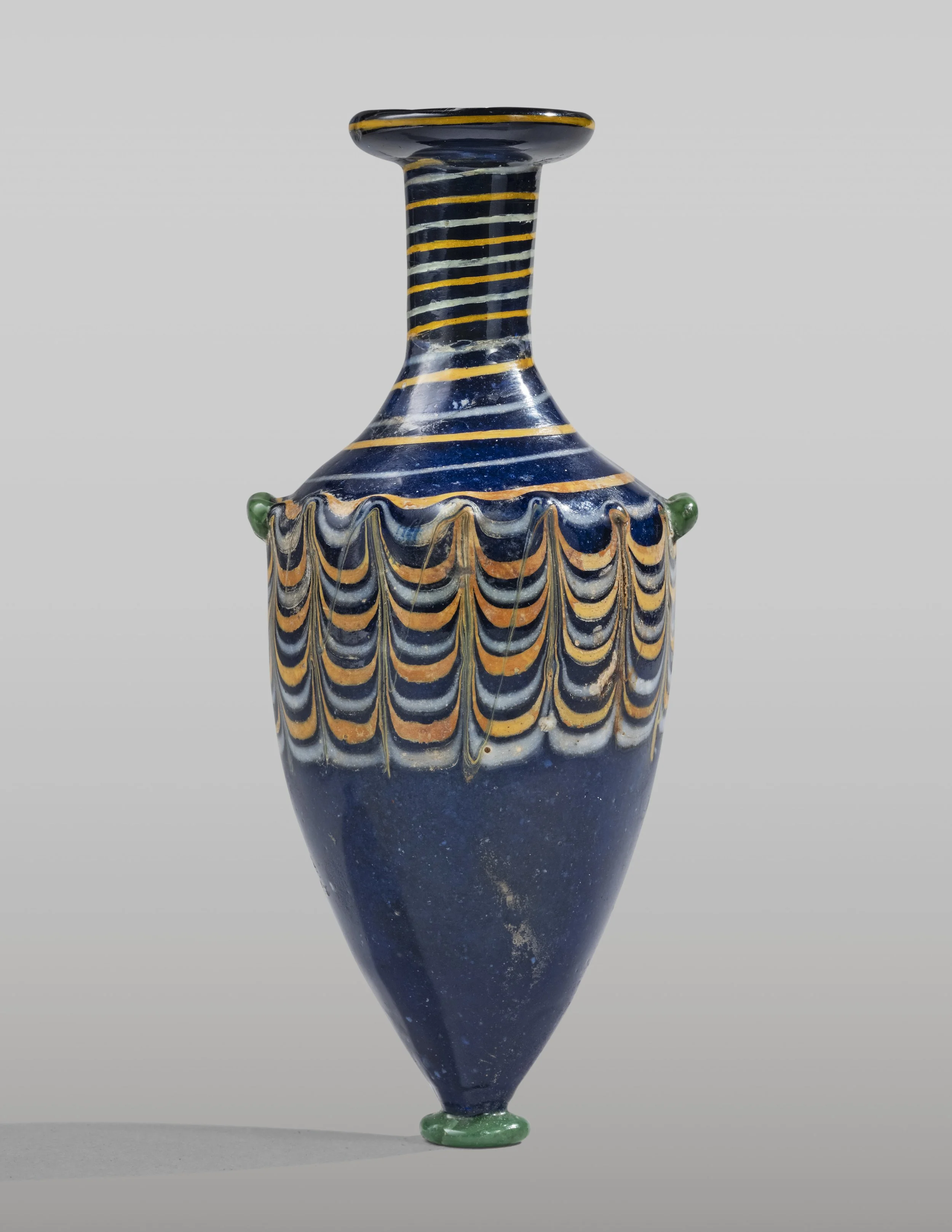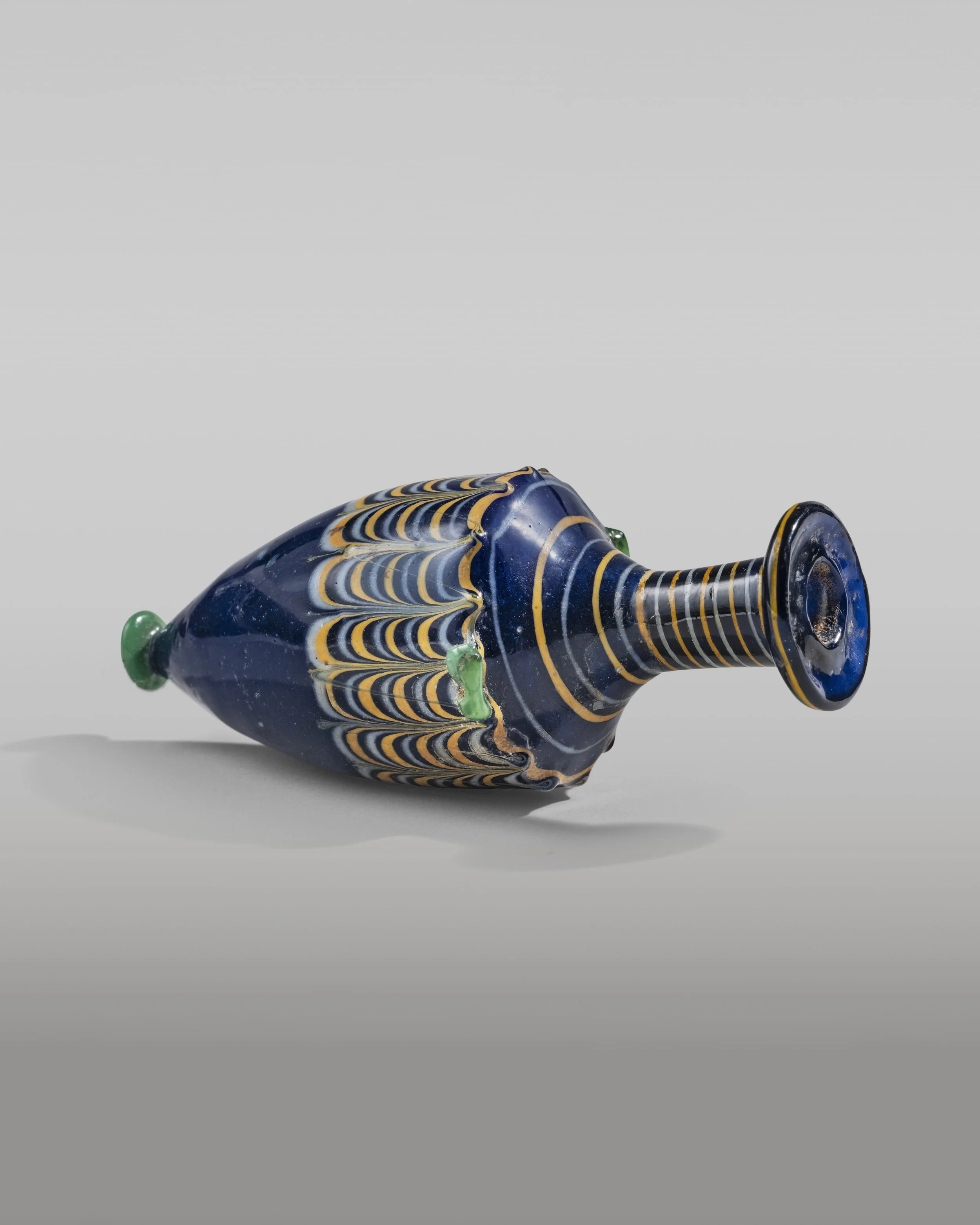Ancient Greek Core-Formed Glass Amphoriskos



Ancient Greek Core-Formed Glass Amphoriskos
Greek, 3rd century B.C.
Glass
H: 9.0 cm (3.5 in)
Serial: 228
The vessel shaped as a small amphora, an amphoriskos, is a perfume bottle of attractive polychromatic design. It has a translucent green-blue pad-base, cobalt blue body, tall and narrow cylindrical neck and a flaring rim. Two transparent green-blue lug handles were attached to the shoulders. The manufacturing involved the preliminary made clay, or sand, core shaped as a desired vessel’s form to which the molten glass was rapidly applied by rotation. The trails in opaque white and yellow starting at the edge of rim-disk were wound down spirally to the shoulders and tooled into a festoon pattern on the upper body,
In this technique, shaping of rim, foot and adding the handles, as well as the “combing” the glass with a sharp instrument to create the festooned or feathered designs, were possible by repeated heating of sand-core objects in the furnace. Historically, this technique originated in ancient Egypt of the New Kingdom in the 2nd millennium B.C. and remained in use in the Mediterranean throughout the Hellenistic period.
CONDITION
Reassembled; some deposits inside.
PROVENANCE
Private collection, acquired on the London art market, 1992.
BIBLIOGRAPHY
BIANCHI R. S., ed, SCHLICK-NOLTE B., BERNHEIMER G. M., BARAG D., Reflections of Ancient Glass from the Borowski Collection, Mainz am Rhein, 2002, pp. 71-78.






